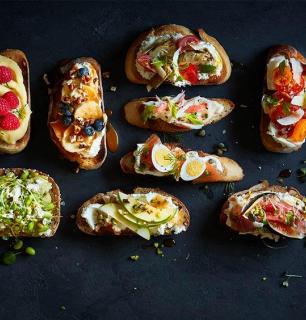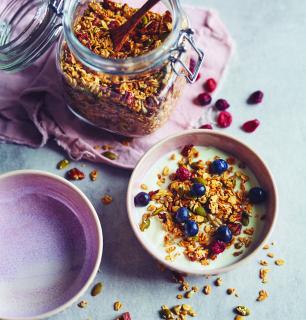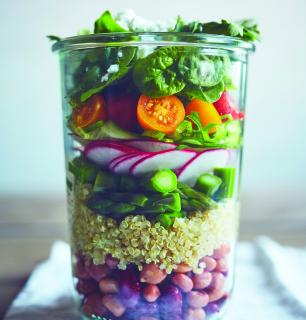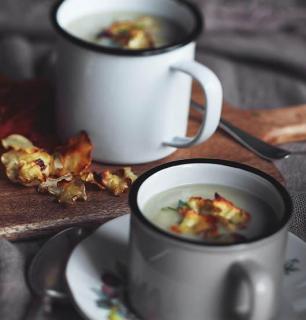The medium
SAY HELLO TO SPELT: Grain doesn’t come any tougher. It’s got attitude, stamina and a stellar family tree with an impressive lineage, plus it’s fully armoured. Wheat’s a snivelling wallflower compared to spelt – and if it came down to a barroom brawl, my money would be on that gritty little cage fighter of a grain that first saw itself milled into flour and kneaded into bread before the pyramids were built – an event that predates even your grandmother, or my grandmother for that matter. Still, I’d wager neither had the thrill of baking with spelt’s more ancient cultivar triticum dicoccum, which I’m told is an adventure unto itself, a little like rafting the Amazon against the current at the height of the rainy season – great fun, if you like that sort of thing. Luckily, the only variety you’ll ever encounter is its kinder, gentler cousin, triticum spelta; it offers all of the rewards with none of the hazards and bakes up as many smiles as buns.
FROM RELIC TO RENAISSANCE: It’d be easy to rest on one’s laurels when you’ve been busy feeding folks for over 5,000 years – but spelt remains humble, even in this period where its popularity is resurgent and its loaves resplendent. After millennia of success, it’s high time this spunky, delicately delicious, well-kept secret had its moment in the sun, which is ironic considering it’s not a grain that grows particularly well in hot, dry climates. So put aside your wheat (buck- and other varieties), forget those familiar flours you’ve come to use as a crutch and let yourself be drawn into the wild world of spelt. It’s making a comeback, and it’s a bread bandwagon you don’t want to miss.
BUILT TO LAST: Think of spelt as old-school wheat. Except it’s not really wheat. Yet both are grains. Follow me? Well, don’t give up yet; I’m just beginning. At one time called dinkel wheat, hulled wheat and of course the “wheat of the Gauls,” it enjoyed a place at Neolithic and Middle Age European tables in loaves heavy and dense enough to sink a small boat. Spelt is bigger and bulkier than its genetically refined cousin – and a lot of that bulk is locked in the husk, 30% of the total weight in fact. Imagine wearing two parkas and walking up to a ravenous grizzly. That bear’s looking at a half hour of weather-proof fabric and insulation to get through before he hits lunch – spelt’s husk works the same way. Great protection, but it slows and complicates an otherwise straightforward path to it becoming a meal.
GOOD FOR YOU MEETS GOOD TO GO: Ancient grains have plenty of nutritional advantages, hidden benefits you wouldn’t expect from a grain that hasn’t undergone centuries of genetic prodding and poking. Hundred grams of spelt wheat (don’t ask me to convert that into slices of bread…) contains up to 20% of one’s daily dose allowance of protein and fibre, B vitamins and a smattering of minerals – and manages to do that while remaining relatively low in fat. It might be ancient, but it’ll keep you healthy and regular. One caveat: Baking with spelt requires a little more attention. Because it more closely resembles barley when chaffed, it does best when you treat it as one would whole-wheat flour; so, a bit more yeast, and a little less kneading. Dough made from spelt tends to spread out more than puff up, so cut back a bit on the water and opt for baking in a bread pan to help your loaf keep its shape. Otherwise, you’re likely to end up with a wide, flatbread puck. Of course, if you’ve got a house full of hockey players, it might prove popular.
FROM OUR LAND: Première Moisson sources its spelt flour from local supplier La Milanaise, which in turn mills it from local growers in Quebec. Growing and harvesting this unusual, and unusually good, relict strain is not for the faint of heart. It grows well in Quebec’s cooler, wetter climate, the opposite of what Prairie wheat strains need to survive and flourish. Unlike us, spelt never complains about the cold and damp. Spelt — it's not a grain to be trilfed with.
Our recipes
See all recipes




